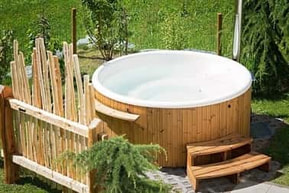What about inground hot tubs vs above ground hot tubs? Which one is better? If you’re reading this, you probably live in Canada with more than half the year ranging from chilly to biting cold. It is highly recommended to select above ground, based solely on its proximity to the house and its lower maintenance needs.
Finally, what are the electrical wiring needs for installing a hot tub? The bare minimum is running off a standard 110 volt outlet, but then the pumps and heater would not be able to run simultaneously. Running off 220 volts is better. No matter which option you choose, the wiring should be performed by a skilled licensed electrician.
Finally, what are the electrical wiring needs for installing a hot tub? The bare minimum is running off a standard 110 volt outlet, but then the pumps and heater would not be able to run simultaneously. Running off 220 volts is better. No matter which option you choose, the wiring should be performed by a skilled licensed electrician.



